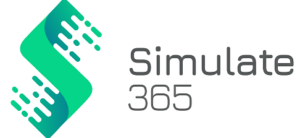Modeling reactors is an important engineering task that requires a knowledge of mechanisms, equilibrium constant, and stoichiometry of the reaction. The challenge to hypothesize the equilibrium constant and stoichiometry of a complex reaction system resulted in the development by NASA in the late 1960s of a general Gibbs minimization approach. The approach is for finding the equilibrium composition for large and complex reaction systems without the need to write equilibrium reactions.
The Gibbs reactor modeling is particularly useful for predicting the behavior of biological systems or industrial processes where the reaction mechanisms are not well understood or are too complex to model using traditional methods. It allows for the prediction of the effect of changing reaction conditions on the equilibrium composition, and subsequently, the optimization of reaction conditions to obtain desired products.
DWSIM is the world’s best-known open-source process simulation software that enables the simulation of chemical processes, inclusive of the modeling of Gibbs reactors.
The Spoken Tutorial project presents a great learning resource on this subject.
We 👍 this video because:
– It showcases the simulation of a Gibbs reactor in DWSIM
– The video demonstrates two different methods for minimizing Gibbs free energy: Direct Gibbs Free Minimization and calculating reaction extents
– The video presents a comparative analysis of the results obtained from the equilibrium and Gibbs reactor simulations.
© 2025 CGC Capital-Gain Consultants GmbH. All rights reserved.
CHEMCAD is a registered trademark of Chemstations Inc. and is not associated with Simulate 365 or CGC Capital-Gain Consultants GmbH.
